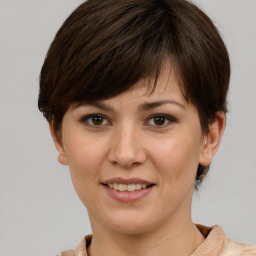Introduction
Operation management plays a very important role in the business organization. It mainly depends on the size of the organization and how effectively it is applied There are some business activities or functions which can be connected with each other more effectively. The most important thing here is that the service, goods or any other aspect should add value to the organization. Few factors where operation management plays an important role are the management of the resource, financial management, goal setting, and communication. Operation managers need to have good interpersonal skills and communication so that their organization can work together (Antonio Martins and Ramos Martins, 2012). This report is based on Hotpoint Company which has very good goodwill and marketplace. This organization mainly deals with marketing, manufacturing and selling specific products such as television, refrigerator, washing machine, cookers etc. In this project, the various principle of operation management in an organization as well their strategy for continuous improvement that is based on management and operation will be discussed. The main aim of this project is to understand work breakdown structure used in PLC and theories show the effectiveness of implementation of PLC.
Task 1
P1 Implementation of operations management principles in the organization
Implementation of operation management includes first understanding the process of manufacturing and operation which drives information and control system and which enables us to finally develop and plan business strategy. Every organization has several management teams and every team is assigned a particular task. Operation management team is highly skilled in developing the strategy so that entire process is finished with the minimal use of resources and processes.
OPERATION MANAGEMENT PRINCIPLES:
Operation management has some principles that help to implement strategies that are as follows:
- The principle of reality: - According to this principle, operation managers has the tendency o focus on the tools rather than the problem. Because a problem has no solution but understanding a tool might give us a solution (Beringer, Jonas and Kock, 2013).
- The principle of organization:-According to this principle, everything should be organized in a manufacturing unit so that all the profit can become predictable and consistent. It is very easy to organize everything in an industry because everything is interconnected.
- The principle of fundamentals:-Everybody in the industry should stick to the common fundamentals on which all the production is based. Marinating record of inventory, BOM etc will make sure that the company has a great chance of success.
- The principle of accountability:-People should be held accountable for their work because with accountability comes responsibilities. And if an individual will take the responsibility of what he has been doing he will be more alert. Besides reward and bonuses will also result o great effort of the people.
- The principle of variance:-Variance is inherent in every process. It can either be motivated or can be controlled.It is motivated only when new changes or innovation is required in the company and it is controlled when the organization’s goal is to reduce cost (Blomquist, and et. al., 2010).
- The principle of causality:-The major problems which are faced by every manager are urgent shipment, late quotes, etc which are in need of dire attention. Managers should pay attention to them because if these problems are not solved they are bound to attack again.
- The principle of managed passion:-Passion of the employee can become a game changer for the company. If the employees are passionate then they can bring changes that can take the company to the next level and if the employees are just putting their time then they will not participate in the overall development of the company. Thus, the manager should instill passion amongst their employee.
- Principle of humility:-Every person in this world in not perfect. The manager should understand this and should accept their limitation. Because if they accept their limitation then they start learning from the mistake and move on to become a better manager (Brauers and Zavadskas, 2010). It should not happen that the company has to pay the cost of trial and error of the managers.
- The principle of success:-Market is very volatile so is the definition of success. But it should always be kept in mind that whatever will make the life of customer easier will become the product of the future. So the definition of success is always in terms of what matters most to the customer. The most important thing to understand is that sales are not the surety of success, it is a mirage.
- The principle of change:-Change is very important for the organization because every manufacturing technique will become obsolete in few years. Eventually, new techniques will find a way to the market. So managers should never get caught up with any particular strategy and he should adapt himself according to the changing market.
SIX SIGMA:
Six Sigma was first introduced in Motorola Mike Harry, who is called the “godfather” of Six Sigma was the first person to apply the concept of six sigma properly. Six Sigma is assumed to be directly inherited from TQM, or Total Quality Management. The toolset used in both are almost same. With the help of six sigma, we can eliminate the defect and can also reduce the cost of the company to a greater extent (Fernández-Sánchez and Rodríguez-López, 2010). With the help of six sigma tools, we can solve various management, operations, and quality problems.
The major tools of six sigma are DMAIC which stand for define, measure, analyze, improve and control
- Define:-First recognize what kind of problem would you like to fix. Board members consult all the participating members to give their opinions and they define what the scope of the project is. Every other parameter like customer needs, budgetary etc are all assigned to the project. As the project began to get into shape, team formation takes place.
- Measure:-Measuring includes quantifying the problem. It defines the magnitude of the problem and its performance curve. It is very important to measure the data throughout because it makes us aware of the problems. While collecting data, managers focus on both the process as well as customer needs. So I that way both process and needs of the customer are important (Fleming and Koppelman, 2016). Thus the lead time is also reduced and profit is increased.
- Analyse: - This process is all about getting to know what is causing the problem. It is very important to pay close attention to analyze the different phase because without analyzing the root cause of the problem, the team might not get a solution which is not feasible. Thus before proceeding further, one must closely examine the process by time analysis, value analysis, and mapping. After that, the team must verify the cause of the problem because, with it, the team will be able to get the knowledge about the department where the problem actually exists. After going through above points the team must update the project charter.
- Improve: - Once the project teams have determined the root causes of the problem it is the time to develop solutions (Gunasekaran and Ngai, 2012). The Improve Phase is very crucial and here all the team members sit to brainstorms solutions, bring process changes and implements solutions. It is not an easy process because brainstorming takes a lot of time. Out of all the ideas that have scoured during brainstorming the team has to select the best possible solution and implement it. The managers should never forget that after implementation they should always collect the data to check whether their solution has brought changes to the organization or not.
- Control: - It is very hard to maintain the solution. Now that the problem is fixed and the production is going to full power, the team must ensure that the process gets improved. The team must ensure that their strategy is implemented properly and if not, then they have a backup responsive plan (Lenfl and Loch, 2010). Managers should always document the process and should apply improvement to other areas as well.
Task 2
P2 Continuity in improvement plan based on review and analysis
Continuous improvement is a process in which shortcomings and obstruction in the company are identified and these problems are solved by modifying the business structure. The continious improvement includes organizing the improvement teams, assigning the projects, evaluating results and controlling the outcomes. Moreover, the Continuous Improvement always promotes their employee by giving them rewards and bonuses.
CONTINUOUS IMPROVEMENT PLAN AND ITS EFFECT
Earlier the concept has been applied to production with the ultimate end goal being the elimination of causes that are reducing the overall profit.It is done so that end process could be made quicker and shipped to the customer earlier. One of h most important way by which we can make a continuous improvement is:
- By including better promotional activities: - In the current market scenario, where different companies fighting to capture maximum market are there, lack of promotional activities may result in dissatisfaction. And due this lack of promotion, the company does not has wide customer reach thus affecting their overall sale (Mir and Pinnington, 2014). This also has an effect on customer mindset as they now do not have awareness about the product and they are now in doubt about whether they should purchase the product or not. This kind of business strategy should be improved. A company should promote their product in the market by aggressive marketing so that they can create awareness about the product which in turn will bring the trust of the customer.
- By including after sale service:-The company Hotpoint mainly deals with the selling of electronic product like a refrigerator, washing machine, Television etc, and all of them are high-cost product. The customer expects the company to give after sale warranty so that in case of any miss happening they can directly contact the company and get the damaged part repaired free of cost. This mindset of the customers should be kept in mind. And in order to gain the trust of the customer, the company should open more service center in the city (Pemsel and Wiewiora, 2013). There is an added advantage of opening service centers and it is the feedback which they get directly from the customers. By this feedback, the company can increase the product quality and this way they will perform better in that geographical market.
From above-discussed factors it is observed that the planning may turn out to be an n effective tool for the proceeding of Hotpoint Company. According to analysis, it is observed that company should focus more on the innovative ideas as nothing is permanent in this world. With new innovation in their products, production and promotion of their products will become much easier and catchier. Moreover, with innovation, small problems can be eliminated. Manager should plan various research methods for increased performance of their product. Company can plan better promotional activities by choosing the various medium of promotion of their product in the business market. This is because promotion decides the faith of the product.
Effective strategies for implementation of the continuous improvement plan
The biggest strategy for implementation of continuous improvement plan is to take feedback from the customers. Proper qualitative and quantitative analysis should be done on (Ramasesh and Browning, T. R., 2014). This will increase loyalty and faith among customers towards the given company. Improvement can be applied by following the following activities:-
- Good employee-employer relationship- Employer-employee relation is very important as it decides the environment of the company. For every successful implementation of any strategy, the relation between them should be good so that both the employer and the employee can understand each other and work in unison.
- Proper communication channel- good communication channel between employers, employees, and customer will create a positive business environment that will help the business to reach to a greater extent.
- Priority to employee’s need- Manager in Hotpoint organization must ensure that they give priority to employees needs and demands and give take effective steps to increase efficiency in the business organization. Employees are they only and legit source of communication between organization and customers so manages should understand their needs and demands (Robichaud and Anantatmula, 2010).
- Proper guidance and direction- Proper training should be conducted in the company so that all the employees and the managers work more productively. With proper guidance and direction, the employee will know the 5 w’s of the market and they will work more efficiently.
ORGANIZATIONAL THEORIES, MODELS, AND CONCEPT
It is no longer enough invest in new technology and new production techniques as everybody can do that. It is now about who is the best in when it comes to about managing the organizational activity and controlling the individual talent.
There are two types of theories i.e. classic theory and modern theory
Classical organization theories deal with the organization structure and concepts to increase organization’s efficiency. Taylor gave scientific concepts, Weber presented the bureaucratic approach, and Fayol gave a theory called administrative theory of organization. According to tailors, work planning is important to achieve maximum efficiency with standardization and simplification of the management.
Weber concept was based on the following principles: - Structure, Specialization, Predictability, Rationality, and democracy.
According to administrative theory, fulfilling the demands of accomplishing the tasks is very important and it includes various concepts of management, the concept of line and staff, committees and important function of management.
Modern theory tends to be based on the fact that the organization has to adapt according to its environment. In modern theory, an organization is designed and structured in such a way that individuals interact with objectives here (Söderlund, 2011). Its approach is multidisciplinary. There are three approaches used in it and those are system approach, socio-technical approach, and situational approach.
Task 3
P3 Application of Product Life Cycle
Product life cycle includes the strategy from the point when the product is first introduced in the market to the point when it is in its final stage. We can define product life cycle by dividing the term product and life cycle. Product means anything which is tangible like manufacturing goods. Medicine, electronics etc to the service like transportation, annual maintenance contract, etc. And when we talk about life cycle it includes the actual life changes that a product or service has to get through in order to survive. Since there is a term called cycle, it means it is cyclic. A product life cycle may include a various term like raw material, production, distribution, utilization, and disposal.
Suppose Hotpoint is launching a refrigerator in the market. Since the refrigerator is one of its kind in technology the company has to market the product very effectively. The company should know what source of advertisement he should choose to make its product famous in the market. Understanding the demand and making the right product according to it is very important in the market (Subramanian and Ramanathan, 2012). Various research and development laboratories should be established in the market for the same. .The innovative feature in the refrigerator will help in the sale of the product. Another important factor which must be kept in mind is the products of competitors and their features because this will give them a better idea of what are the strategies being followed by the competitors.
There are four stages of the product development and every product goes through these four stages. These stages have further ben stated as under:
- INTRODUCTION STAGE: - Introduction stage refers to intial or starting stage related to products and services. It is the first step for which is also the starting phase of goods. Since the product is just introduced in the market it is a slow phase of growth. An individual should be quite patient in the period of the product growth and initiation. It is an important stage because all the other stage depends on this stage. It is necessary for the business manager of Hotpoint to understand the demands of the market and needs of the consumer so that the new product can be launched effectively. Here business manage should expect low income as this is the stage where production cost is very high and the profit is very low. It will take about 4 to 5 weeks
- GROWTH: - This is the second stage in which grwoth of a newly launched products and services takes place. It is the stage where the product has now been accepted by the customers and gaining popularity. Here the profit of the company increases exponentially and the product becomes and more famous (Turner, 2016).It is the stage where the manager should pay more attention because in this stage the revenue keep on coming and the manager should make i sure that they can maximize their profit during this stage.
- MATURITY: - It is the stage where the sales decreases at a quite normal pace because the product has been purchased by their potential buyers and now only aggressive marketing of the product can help its further sale. Here profit starts to decrease and the company face increased competition because the product has been copied by various market competitors. Only innovation in the product can help the company to reach new heights.
- DECLINE: - It happens to be the last stage where a product starts receiving negative response. Products in this stage can only sustain when managers bring out innovations in thier products and services. It is a negative stage for the product because the product has lost all its customers and sale show a downward drift. Here customers do not take interest in the product because the product is now obsolete and no innovation in the product makes the situation worse.
Work break down structure: It refers to the break down whole work within the team into some managable section. This is helpful for the project manager to assign work to employees on the basis of their skills. Further, on the basis of this structure performance of employees will be evaluated. In relation to Project life cycle, at introductory stage main focus of project manager is on dividing whole of launching product into sub sections which is helpful in finding out actual remaining work of company. This will help in reacghing to the customers effectively. After meting customers requirement, now company focuses on growth stage in which mai objective of company is on earning profit . It will be beneficial for organisation to generate more profit by taking dividing work effectively. Further, project manager divides its work after reaching to maturity. In this company is at stable stage where it earns profit which enough for survival. At, sales of product startes declining as customers are now interested in the buying highly innovative product which is available at market place.
Task 4
P4 Effectiveness of PLC in the application of project
It is required to understand the importance of plc in the company because it defines the criteria for success. Every company has a different strategy to sell the product. Once the strategy is planned and the product is introduced in the market then managers should understand what are the feedbacks coming from the market and introduce the changes accordingly (Antonio Martins and Ramos Martins, 2012). Problems in existing processes can also be identified and necessary actions can be taken for gaining competitive advantage.
Hotpoint when tries to enter the market with new refrigerator has to make good reputation initially in the market and it is very complex. Here comes the role of manager where he encourages the workers to give their best facilities to their customers in the best manner. Once the information is collected from all the employees it should be distributed to different teams so that every team and every team should try to make the product more sustainable in the market. PLC is not easy for applying to their planning for the future time period. It is necessary that policies and strategies help in fulfilling all major goals and targets in an appropriate manner. Manager and leader need to analyze such way which satisfies all objectives in the firm.
Introducing PLM in the manufacturing unit ensure that the project progresses forward efficiently throughout its existence. With PLC, processes that have been recognized as a good practice must be kept and the processes which are not efficient must be replaced. But here manager should make sure that all the process are not discarded because there is a certain process which is suited best for services so it is the duty of the manager to determine which process should be kept and which process should be replaced.
In supply chains and manufacturing sector, the PLC cycle will help a manager to develop and formulate strategies and effectively manage various industries. It identifies problems and prepares strategies for analyzing and measuring the problems going in the existing industry (Beringer, Jonas and Kock, 2013). Also, company manager should take into consideration best and cheap in rate. This includes purchase management, inventory control, logistic administration etc. that will assist in managing cost and also reducing wastage materials in a proper manner.
Conclusion
According to the above mentioned report, it can be analyzed that Operation management is essential for an organization in order to increase the organizational quality and productivity. There are several theories in it and every manager uses different theory. There is nothing called best theory because it depends on the implementation of the theory. It mainly concerned with development, design, and improvement of the existing system that can enhance the value system in an organization. Thus manager should keep in mind every aspect of the company and only then a company can prosper to its full extent.
References
- Antonio Martins, V. and Ramos Martins, M., 2012. Outsourcing operations in project management offices: The reality of Brazilian companies. Project management journal. 43(2). pp.68-83.
- Beringer, C., Jonas, D. and Kock, A., 2013. Behavior of internal stakeholders in project portfolio management and its impact on success. International Journal of Project Management. 31(6). pp.830-846.
- Blomquist, T. and et. al., 2010. Projectaspractice: In search of project management research that matters. Project Management Journal. 41(1). pp.5-16.
- Brauers, W. K. M. and Zavadskas, E. K., 2010. Project management by MULTIMOORA as an instrument for transition economies. Technological and Economic Development of Economy. 16(1). pp.5-24.
- Fernández-Sánchez, G. and Rodríguez-López, F., 2010. A methodology to identify sustainability indicators in construction project management—Application to infrastructure projects in Spain. Ecological Indicators. 10(6). pp.1193-1201.
- Fleming, Q. W. and Koppelman, J. M., 2016, December. Earned value project management. Project Management Institute.
- Gunasekaran, A. and Ngai, E. W., 2012. The future of operations management: an outlook and analysis. International Journal of Production Economics. 135(2). pp.687-701.
- Lenfle, S. and Loch, C., 2010. Lost roots: how project management came to emphasize control over flexibility and novelty. California Management Review. 53(1). pp.32-55.
- Mir, F. A. and Pinnington, A. H., 2014. Exploring the value of project management: linking project management performance and project success. International journal of project management. 32(2). pp.202-217.
- Pemsel, S. and Wiewiora, A., 2013. Project management office a knowledge broker in project-based organisations. International Journal of Project Management. 31(1). pp.31-42.
- Ramasesh, R. V. and Browning, T. R., 2014. A conceptual framework for tackling knowable unknown unknowns in project management. Journal of Operations Management. 32(4). pp.190-204.
- Robichaud, L. B. and Anantatmula, V. S., 2010. Greening project management practices for sustainable construction. Journal of Management in Engineering. 27(1). pp.48-57.
- Söderlund, J., 2011. Pluralism in project management: navigating the crossroads of specialization and fragmentation. International Journal of Management Reviews. 13(2). pp.153-176.



 Company
Company


















